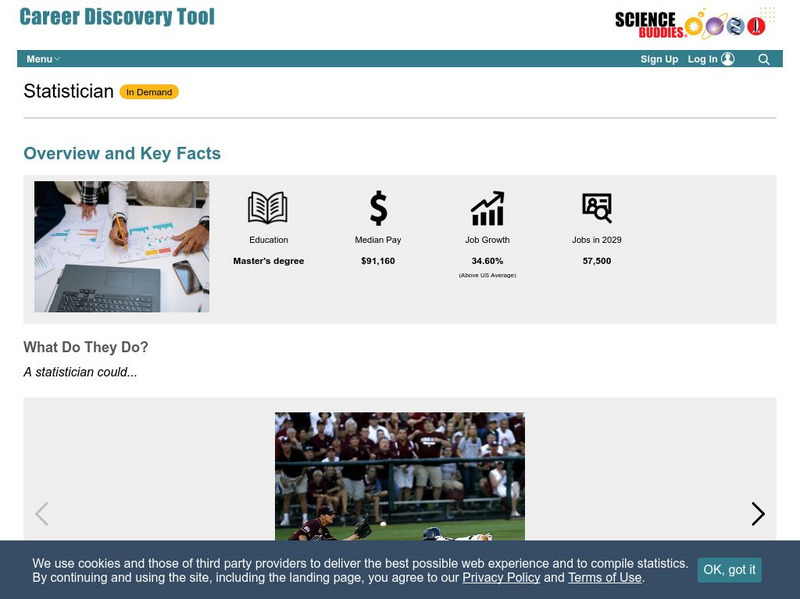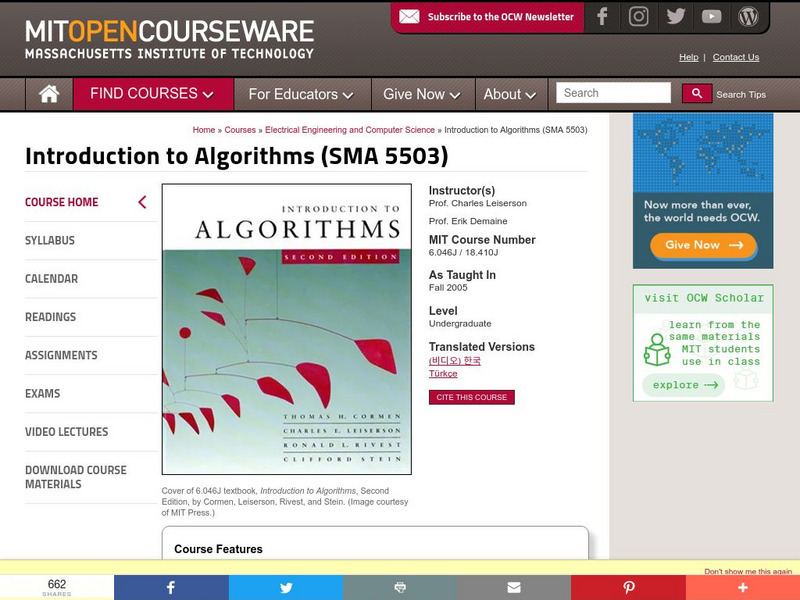NASA
Nasa: Robotics
Contains information about how to program a robot and how space exploration benefits from robotics technology.
Other
Sprk: Macro Lab Lesson 2 [Pdf]
Students will use the Sphero robotic ball to draw polygons and learn the relationship between heading angles and the number of sides in a polygon where all sides are equal. They will also learn how to setthe colors of the lights inside...
Other
Sprk: Macro Lab Lesson 3 Mean, Median, & Mode: Teacher Guide [Pdf]
Young scholars will use Sphero to conduct an experiment. They will identify how long they need Sphero to move at 10% speed to reach and knock over a target object (such as a whiteboard marker). Using this information, they will then...
Other
Sprk: Macro Lab Lesson 4 Percentages: Teacher Guide [Pdf]
Students will use Sphero to explore percentages using speed and color. The speed experiments are quantitative and the color experiments are qualitative. They will program the Sphero to move at 100% speed for a particular amount of time,...
Other
Sprk: Sphero Chariot Stem Challenge [Pdf]
SPRK STEM challenges are fun, interactive activities that challenge students to use creativity and team-work to move through simple steps of the design process in order to build Sphero-based creations. In this challenge, there are...
Other
Sprk: Sphero Hydro Hypothesis Stem Challenge [Pdf]
SPRK STEM challenges are fun, interactive activities that challenge students to use creativity and team-work to move through simple steps of the design process in order to build Sphero-based creations. The Hydro-hypothesis challenge...
Other
Sprk: Time, Speed, and Distance:teacher Guide [Pdf]
Students will use Sphero to show that there is a linear relationship between time, speed, and distance. They will program Sphero to move at a particular speed for a particular amount of time, and then measure how far it has gone.They...
Other
Sprk: Sphero Bridge Stem Challenge [Pdf]
SPRK STEM challenges are fun, interactive activities that challenge students to use creativity and team-work to move through simple steps of the design process in order to build Sphero-based creations. In this challenge students will...
University of California
Univ. Of California: Career Exploration Link
Are you interested in exploring a career? The occupational career exploration links allow you you to select a professional area and display potential job paths within that field.
Science Museum, London
Science Museum: Ada Lovelace
Some say that Ada Lovelace was the first programmer because she wrote instructions for a computing device designed by Charles Babbage. This site presents a brief history of Ada's life and the important role she played in the history of...
Education Place
Houghton Mifflin: Eduplace: Using the Web
The World Wide Web is a great place to find more information about a topic. But there are a lot of sites out there - some are good and some are not so good. Here are some steps to help students use the Web to do research.
Other
Science Fairs Homepage: Senior Projects
This resource from the Eastern Newfoundland Science Fairs Council provides really substantial projects for senior High School students. These are online topics, six areas, with about 10-20 topics per area.
Cosmo Learning
Cosmo Learning: Vlsi Design
A collection of video lectures from a VLSI design course taught at the National Programme on Technology Enhanced Learning. The course focuses on design, verification, and test with forty lectures. Topics covered include bipolar junction...
Cosmo Learning
Cosmo Learning: Broadband Networks
A collection of video lectures from a course introducing students to broadband networks. Webpage includes thirty-two lectures from a professor at the National Programme on Technology Enhanced Learning . Lectures vary in length and cover...
Other
Curiosity in the Classroom: Calculating Degrees of Freedom of Robotic Arm [Pdf]
A lesson plan to explore the movement of robots. Students will investigate the number of directions a robots arm can move using a simple construction set. An advance lesson to calculate the degrees of freedom using the Grubler's formula...
Curated OER
Image: Konrad Zuse
Biographical information about the engineer Konrad Zuse is provided at this site. Tells of his accomplishments and contribution to computer history.
Science Buddies
Science Buddies: Science Careers: Mathematician
Mathematicians work in many areas. Some are applied mathematicians, some theoretical, but all use mathematics as a way to figure things out by using deduction. This Science Buddies site lays out the requirements needed to become a...
Science Buddies
Science Buddies: Science Careers: Math Teacher
A love of mathematics and the ability to share this love is what it takes to be a math teacher. This Science Buddies site lays out the requirements needed to become a math teacher, as well as the education and job description. Included...
Science Buddies
Science Buddies: Career Profile: Economist
Economists deal with the distribution of resources and how that distribution affects the economy. This lays out the requirements needed to become an economist, as well as the education and job description. Included are interviews with...
Science Buddies
Science Buddies: Career Profile: Statistician
Statistics is a fascinating subject and everyone loves to spout them, but a statistician really knows how to use statistics to answer real-life questions and make predictions based on mathematical data. This Science Buddies site lays out...
Massachusetts Institute of Technology
Mit: Open Course Ware: Introduction to Algorithms
A complete course on algorithms presented at the college undergraduate level. The course includes video lecture, course materials, assignments and exams. Answer keys are provided for all assignments and exams.
Massachusetts Institute of Technology
Mit: Open Course Ware: Multicore Programming Primer
This is an introductory course on the fundamental design techniques used in parallel programming. The course uses popular gaming consoles to teach the different approach that is required for multicore programming.
Massachusetts Institute of Technology
Mit: Open Course Ware: Introduction to Copyright Law
This MIT course covers a wide range of copyright issues in the digital age. Peer-to-peer file sharing, DVD encryption, fair use and GNU licensing are just a few of the topics discussed in the video lectures.

![Sprk: Macro Lab Lesson 2 [Pdf] Lesson Plan Sprk: Macro Lab Lesson 2 [Pdf] Lesson Plan](https://static.lp.lexp.cloud/images/attachment_defaults/resource/large/FPO-knovation.png)








